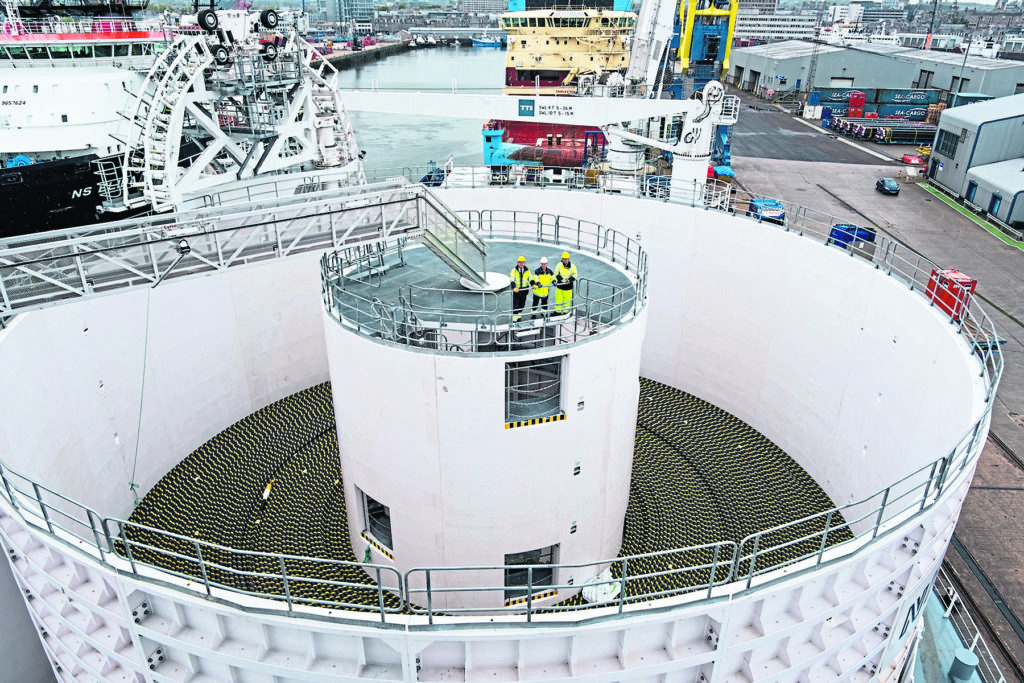
Back in the day – the late ’ 90s – a project called the Zero Surface Facilities Initiative was set up between a collection of operators and contractors known as the Atlantic Margin Joint Industry
Group and the now defunct Centre for Marine and Petroleum Technology.
The basic objective of this initiative was to develop plausible solutions to issues deemed to be potential obstacles to building deepwater subsea production systems with very long distance tie-backs.
The aim was the “identification of applicable technologies, their system impact individually and in conjunction with other technologies”.
To provide a realistic scenario the study looked at a low energy, low gas to oil ratio reservoir with an API of 24, a high energy, high gas to oil ratio reservoir with an API of 35 and a gas/condensate reservoir.
This was a comprehensive piece of work and as I recently trawled through the final report for the first time in 20 years I found it interesting to identify technologies that are now commonplace and those that never made it past the “here’s a cool idea” stage.
Those that made it include multi-phase pumping, electrical submersible pumps, subsea separation, subsea power distribution and high-voltage subsea connectors.
We can also include raw-water injection although perhaps it’s not as widely used as we thought it might be.
Then there’s multifunction inhibitors, hydrate and wax prevention including heated pipelines, diverless pipeline connections and similar technologies.
Inevitably, though, there were lots of “false dawns”.
The all-electric subsea tree, while having been successfully prototyped, hasn’t yet achieved full acceptance.
We looked at the idea of a “launch and leave” ROV that was garaged on and powered by a subsea production system and controlled from shore either by a fibre link or pre-programmed to undertake specific tasks and triggered by an acoustic link.
We also very seriously considered geothermal heating for pipelines using what is effectively a ground source heat pump.
Subsea power generation, seabed gas to liquid technology, active insulation and much more extensive use of composite materials were also considered, but back then had to be transferred to the “stuff for later” list.
In fact it has taken until quite recently for a company to develop a small prototype subsea generator based on tidal energy.
The question is, where does subsea go next?
Robotics seems to offer large potential – but it always has.
Now, though, there are some companies, notably in the US, doing serious work in this area.
Does subsea production need further innovation? Probably, but the incentive and above all the money probably isn’t there now to fund much more than incremental improvements.
Energy transition offers real opportunities provided we’re prepared to be as bold and innovative as we were in the ’80s and ’90s when most of the real progress was made.
Using renewable resources for the generation of electricity is one such opportunity.
Tidal turbine design uses subsea engineering skills, although from what I can tell, bar the example above, no “conventional” subsea engineering and manufacturing companies are active in the sector. Is that because oil and gas sector costs tend to be higher, subsea companies aren’t interested in diversifying or it’s out of their comfort zone?
Then there’s the cable industry.
Quite recently a Danish company laid a 100km cable from Caithness to Moray to connect remote wind farms to a major substation enabling the electricity produced to flow into the national grid.
This company used a cable it manufactured itself, and its own cable lay ship built for it in Norway.
Cable laying is widely used in the subsea industry so this is a good example of what can be achieved if you’re prepared to invest in the right tools. The Danes and Norwegians obviously were.
I would love to see some work being done on the viability of subsea hydrogen production. Electrolysers powered by floating wind turbines could perhaps produce and compress hydrogen for transport by pipeline to shore.
Would it be possible to undertake natural gas reforming subsea?
If it was, you might be able to pump the carbon dioxide produced straight back into the reservoir while pumping the hydrogen ashore. Why not build ultra large diameter tidal turbines driving 50MW or perhaps even larger generators for use in deeper but slower waters? That would be extreme subsea engineering.
On the other hand, why not pick up the idea generated in that study from 20 years ago and investigate large-scale subsea thermal power generation?
While these ideas may or may not be feasible we need to catch the imagination of the subsea fraternity again and apply it to the huge so called renewables market because that’s where we’re headed – and they’d better realise it fast.
Dick Winchester is a member of the Scottish Government’s Energy Advisory Board
Recommended for you
